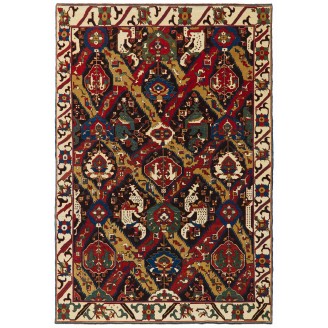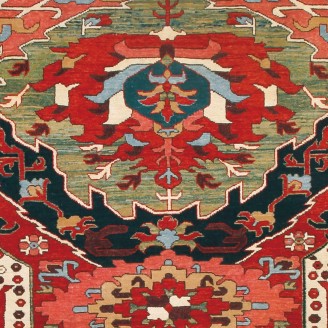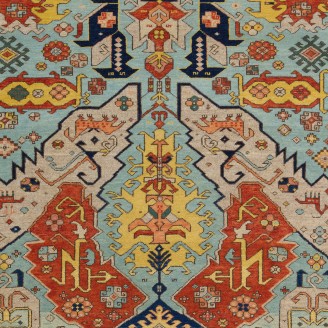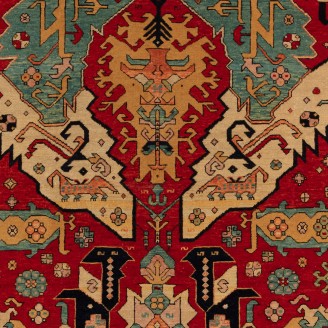Dragon Rug











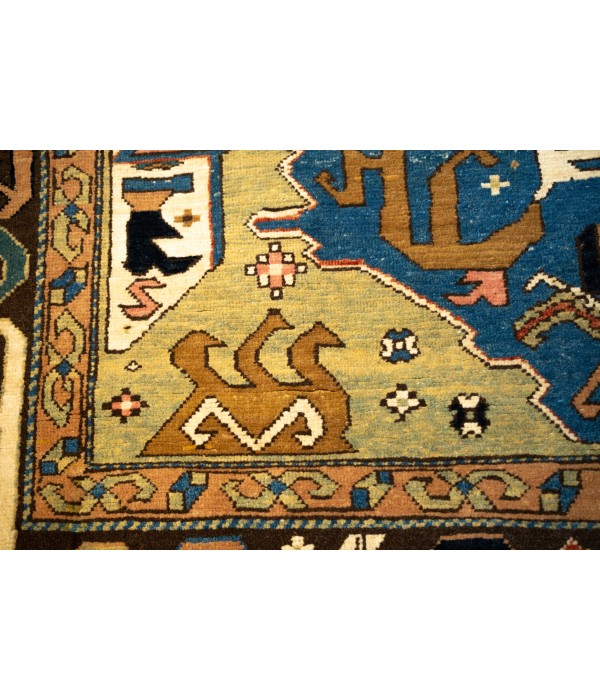





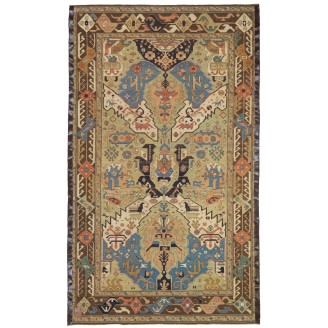
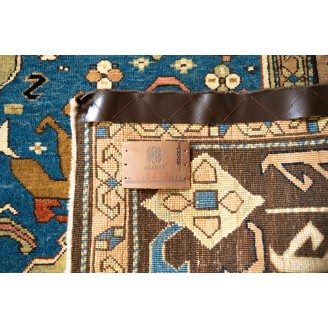



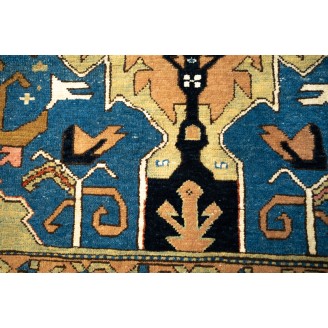



Model: ART00472Dragon Rug
Group: Caucasian Rugs Family
Area: Kazak
Material of Pile: Natural Dyed Hand-spun Wool
Material Warp / Weft: Wool on Wool
Structure: Symmetrical knot on depressed warp inclining to the right
Knots Density: 39x39
Pile (mm): 3
Production Place: DERVİŞ HASAN
Pattern Code: MK 1036 170X284 AR0132
Weight: 15.70kg
Location: Istanbul
Stock: In Stock
Dimensions:
There has long been a fascination with the symbolism of the dragon and its depiction in carpet weavings. The design of ‘Dragon’ carpets consists of a field pattern composed of different colored overlaid lattices formed of pointed, serrated leaves creating intersecting lozenges, which alternately contain palmettes and are flanked by confronting stylized dragons, birds, or animal figures. The most archaic of the ‘Dragon’ carpets include dragon motifs with birds and running animals that are relatively naturalistically drawn, which stand either alone or in confronting pairs facing a tree. The Graf carpet, originally found in a Damascene mosque, now in the Islamiches Museum, Berlin, is considered to be the oldest example of this type, see Serare Yetkin, Early Caucasian Carpets in Turkey, Vol. II, London, 1978, p.8, fig.118. Yetkin defines four types of 'Dragon' carpet: 'Archaic', ‘Four-Dragon’, ‘Dragon-and-Phoenix’ and as a further combined development of the latter, the ‘Two-Dragon’ style, of which the present carpet falls into the 'Dragon-and-Phoenix group along with other examples, some of which include two fragments, one in the Museum fur Kunst und Gerwerbe, Hamburg; another in the Christian Museum, Esztergom, Hungary, a complete carpet in the Kier collection; an incomplete example in the Textile Museum, Washington, D.C; the 'Cassirer' Dragon carpet in the Thyssen-Bornemisza collection, Lugano; the Ali Pasa Mosque carpet in Tokat, and a further example in the Vakiflar Hali Museum, Istanbul (S. Yetkin, op. cit. pp.16-20). It has been suggested that the earliest examples of the Caucasian 'Dragon' carpets have a greater number of repeats across the width of the weaving than in later pieces. An example of a 'Four-Dragon' carpet, also coincidentally from the collection of Charles Deering as the present carpet, was sold in Sotheby's, New York, 27 September 2000, lot 35.Animal combat groups were popular motifs in the late 16th and early 17th century, appearing in Persian paintings, book covers, and of course within the magnificent carpets of the Safavid court, from which it is probable that Caucasian ‘Dragon’ carpets were modeled (Duncan Haldane, Islamic Bookbindings in the Victoria and Albert Museum, London, 1983, no.106, pp.110-111, for example). Many of the classical Caucasian carpets of the 17th and early 18th centuries can be traced back to the 'Vase' carpets of the 17th century. The lattice used in these carpets itself relates to the lattice of 'Vase' carpets (Ellis, op. cit, pp.12-13), but already in the present early 'Dragon' carpet, the coloring of the serrated panels means that the overlay play of the lattice has been lost. The design of this rug is interpreted with a series of borders and soft colors chosen by our designers for this rug.
Color summary: 10 colors in total;
Color summary: 10 colors in total;
- Bistre Brown 411 (Pomegranate - Madder Root)
- Pale Green 439 (Chamomile - Indigo)
- Burlywood 135 (Spurge - Madder Root)
- Natural Wool Color 320 (Specially Washed)
- Dark Sky Blue 23 (Indigo)
- Midnight Blue 347 (Spurge - Madder Root - Indigo)
- Congo Pink 306 (Madder Root)
- Kumera 326 (Pomegranate - Spurge - Madder Root)
- Melon 304 (Madder Root)
- Emerald Green 407 (Chamomile - Indigo)
Dimensions:
5 ft 7 in x 9 ft 3 in ( 172cm x 283cm )
Price:
$9,300
Ex Tax: $9,300

